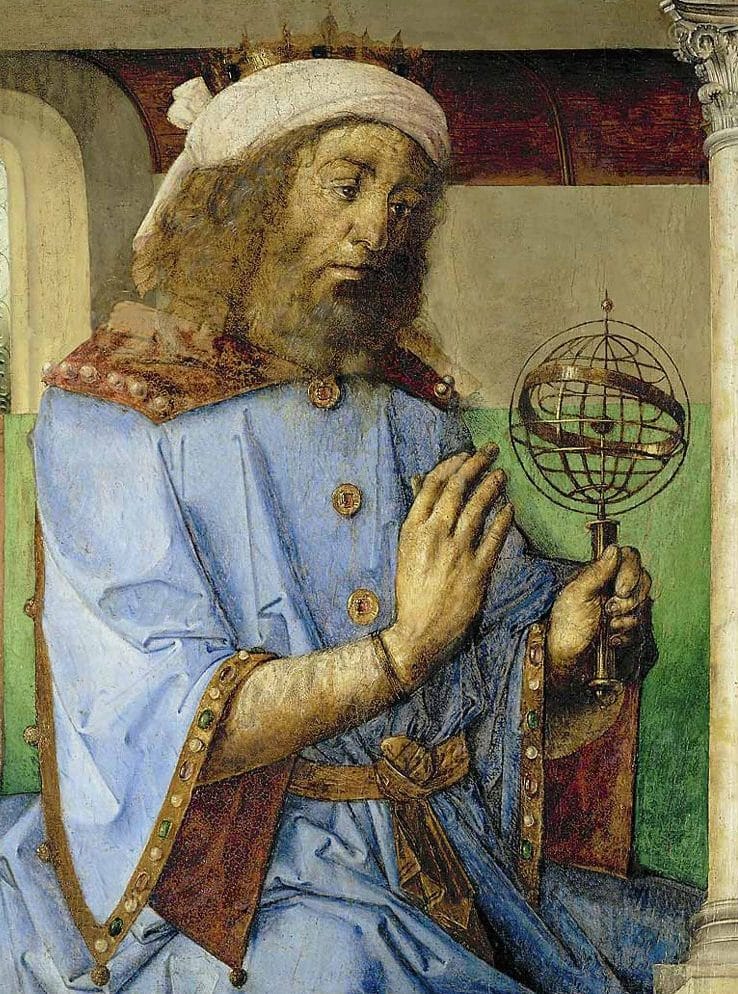Claudius Ptolemy, often referred to simply as Ptolemy, was a Greco-Roman mathematician, astronomer, and geographer whose works have profoundly influenced the development of science. Ptolemy lived during the Roman Empire in the city of Alexandria in Egypt, around 100-170 AD. Despite the scarcity of detailed biographical information about his life, his intellectual legacy is well-documented through his extensive writings.
Ptolemy is most renowned for his work in astronomy, encapsulated in the monumental treatise known as the “Almagest.” This work, originally titled “Mathematical Syntaxis,” represents the culmination of ancient Greek astronomical knowledge. In the Almagest, Ptolemy presented a comprehensive geocentric model of the universe, where the Earth is stationary and at the center, with the Sun, Moon, and planets orbiting it in complex paths called epicycles. This model, although ultimately incorrect, provided a remarkably accurate framework for predicting the positions of celestial bodies and was widely accepted for over a thousand years.
One of Ptolemy’s key contributions was his star catalog, which included the positions of 1,022 stars. This catalog was built upon the earlier work of Hipparchus, an astronomer from the second century BC, whose data Ptolemy refined and expanded. Ptolemy’s star catalog remained a crucial reference for astronomers until the Renaissance.
Beyond astronomy, Ptolemy made significant contributions to geography. His work “Geographia” is a compilation of the geographical knowledge of the Greco-Roman world. In this extensive work, Ptolemy described the world as known to Roman cartographers, providing latitude and longitude coordinates for the locations of various cities and geographic features. His maps, while not entirely accurate by modern standards, were a significant advancement for their time and influenced cartography for many centuries.
Ptolemy also delved into the field of optics. His work “Optics” explored the properties of light, including reflection, refraction, and color. Although much of his understanding was later superseded by more advanced theories, his efforts laid the groundwork for future studies in optics.
Curiously, Ptolemy’s influence extended beyond the scientific community. His model of the universe, aligning with the Earth-centered view, was embraced by the Christian Church in the Middle Ages as it seemed to accord with theological perspectives. The Church’s endorsement helped to cement the geocentric model’s authority until the heliocentric model proposed by Copernicus in the 16th century.
Ptolemy’s work was not without errors, but his methods of observation, mathematical rigor, and synthesis of existing knowledge were groundbreaking. His geocentric model, despite its inaccuracies, showcased a sophisticated attempt to explain and predict the motions of the heavens. The mathematical techniques he employed, particularly the use of epicycles and deferents to account for planetary motion, demonstrated a remarkable ingenuity.
In conclusion, Claudius Ptolemy’s contributions to science were profound and long-lasting. His works in astronomy, geography, and optics shaped scientific thought for centuries. The Almagest, Geographia, and his other treatises remained authoritative sources of knowledge well into the Renaissance. Ptolemy’s legacy is a testament to the enduring human quest to understand the cosmos and our place within it. His efforts, though rooted in the past, paved the way for future astronomical and scientific discoveries, highlighting the importance of curiosity and rigorous inquiry in the advancement of human knowledge.
